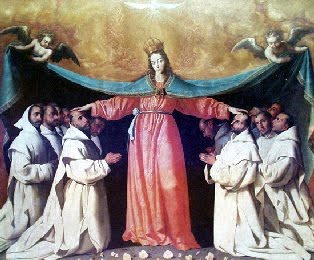 It would somehow seem incomplete to have a week of Eucharistic meditations from some of the spiritual giants of the Church and not include Saint Pio of Pietrelcina . . . or perhaps more affectionately known as Padre Pio. It was this extraordinarily gifted Capuchin priest who wrote: ‘Let me recognize You as Your disciples did at the breaking of the bread, so that the Eucharistic Communion may be the Light which disperses the darkness, the Force which sustains me, the unique Joy of my heart’.
It would somehow seem incomplete to have a week of Eucharistic meditations from some of the spiritual giants of the Church and not include Saint Pio of Pietrelcina . . . or perhaps more affectionately known as Padre Pio. It was this extraordinarily gifted Capuchin priest who wrote: ‘Let me recognize You as Your disciples did at the breaking of the bread, so that the Eucharistic Communion may be the Light which disperses the darkness, the Force which sustains me, the unique Joy of my heart’.Most of his days began shortly after midnight anywhere from 1:00 o’clock to 2:30 when he would rise and begin a prayerful preparation for his daily 5 o’clock in the in the morning offering of the Holy Sacrifice of the Mass. That prayerful preparation often included his beloved Rosary, which he was seldom seen without. Seeking the comfort and wisdom of Our Lady is a great way to prepare for Mass as Padre Pio reminds us: ‘How can the Mother of Jesus, present at the foot of the Cross on Calvary, who offered her Son as Victim for the salvation of souls, be absent at the mystical Calvary of the altar’? Of course, she couldn’t be absent; she is always there with us.
Padre Pio’s Mass could last up to three hours. There were some complaints asking this great saint to shorten his Mass to which he responded: ‘God knows that I want to say Mass just like any other priest, but I cannot do it’. To witness his Mass was to witness Calvary. Padre Pio wrote: ‘My heart feels as if it were being drawn by a superior force each morning just before uniting with Him in the Blessed Sacrament. I have such a thirst and hunger before receiving Him that it's a wonder I don't die of anxiety. I was hardly able to reach the Divine Prisoner in order to celebrate Mass’.
Indeed, witnesses of Padre Pio’s Mass have said that he would approach the altar bent over as if under some heavy weight, like the Cross. William Carrigan, a member of the Air Force, in 1943 was told by two other soldiers about a priest at San Giovanni Rotondo who had the stigmata, the visible Wounds of Christ. This, of course, was Padre Pio. They went to witness Padre Pio’s Mass. William Carrigan said that they knelt down only ten feet away from Padre Pio and could see his every movement. Mr. Carrigan explains: ‘As he [Padre Pio] began the Consecration he seemed to be in great pain, shifting his weight from side to side, hesitating to begin the Words of Consecration which he would start and repeat, biting them off with a clicking of his teeth as if in great pain. His cheek muscles twitched and tears were visible on his cheeks. He reached for the chalice and jerked back his hand because of the pain in the wound which was fully visible to me. After his Communion he leaned over the altar for some time as if he was in Communion with Jesus. Later I learned that at this time he presented his many spiritual children to Our Lord offering his own suffering for them’.
Padre Pio said: ‘A thousand years of enjoying human glory is not worth even an hour spent sweetly communing with Jesus in the Blessed Sacrament’. He offered thanksgiving after Mass, a practice which desperately needs to return to our modern day. He explained it this way: ‘My thirst and hunger do not diminish after I have received Him in the Blessed Sacrament, but rather, increase steadily. Oh, how sweet was the conversation I held with Paradise this morning. The Heart of Jesus and my own, if you will pardon my expression, fused. They were no longer two hearts beating but only one. My heart disappeared as if it were a drop in the ocean’.
May Our Lord grant all of us such a burning desire for Jesus in the Blessed Sacrament!











